SELS staff work diligently to facilitate high-quality student work. Throughout the program, staff develops the culture and skills needed to foster student excellence. In addition to building a strong personal and cultural foundation through the school’s character education program, teachers use collaborative activities, staff and peer feedback, multiple revisions, student creativity, and student presentations to support students’ high-quality work efforts.
High-quality work is expected of students in all subject areas. In Mathematics, students must work individually and collaboratively to both answer and explain problems. Their work must be neat and presentable. Much of the remaining high-quality work expectations are based throughout expeditions, including writing, solo and group projects, presentations, and culminating product development.
Claim: By focusing on Core Practice 12 (Planning for and Supporting High-Quality Student Work), SELS students have a demonstrated excellence producing high-quality work.
High-quality student work has several components: the three attributes of high-quality work; a culture of excellence; and the use of models and feedback processes.
EL Education’s Attributes of High-Quality Student Work (complexity, craftsmanship, and authenticity) are used to provide clarity and direction during the assignment and project/product processes. All major assignments/projects are developed with the three attributes in mind: complexity and authenticity first and then expectations and support for craftsmanship. In the design process, these assignments are reviewed by staff and undergo various iterations based on feedback. Staff also conducts annual checks on consistency with Quality Work Protocols where any discrepancies in assignment and attributes are addressed for future adjustments (QWP Feb ’15; QWP Dec ’18; QWP May ’19; QWP Feb ’20). These QWPs helped us identify needed changes, particularly in “authenticity”, which we then focused on improving over a couple of years.
The projects highlighted throughout exemplify the complexity we strive for in the design process: higher-order thinking; transferability; complex text/writing; and multiple perspectives. They also exemplify authentic formats: connected to real-world places/events; use of experts and fieldwork; and modeled after job-based work, like lab reports, op-eds, instructional manuals, field guides, etc. Craftsmanship is a more involved process; while the teachers can initiate complexity and authenticity in assignments, students are solely responsible for quality. This will be discussed in more detail after a look at some student HQW.
Expeditions are generally the framework for much of students’ work, and are in-depth, inter-disciplinary units where students investigate deeply into specific and (ideally) locally-based topics. Expeditions are framed using Science and Social Studies standards, are infused throughout with English Language Arts standards, and when relevant and possible Mathematics standards. Important components of expeditions include:
- Guiding questions: the essential questions which guide the learning topics
- Case studies: units of study within each expedition
- Learning targets: specific goals for students, used at all levels: entire expedition, each case study, more specific topics throughout
- Authentic experiences: connecting students with opportunities to use, participate in, and/or see how their learning is embedded in the human and natural communities in which they live (fieldwork); additionally, providing students opportunities to put their learning to use, such as in presentations and hands-on projects
- Experts: using community members, both near and far, to enhance the learning experience and further connect the learning to their communities
- Culminating products: end of expedition assignments or events which demonstrate learning and are ideally service-based and presented to public audiences
To help facilitate expedition development, staff use templates for both the overall expedition (SELS – Expedition Development Template) and for each case study (SELS – Case Study Planning Template). Below are examples of expeditions and their resulting HQW.
Kindergarten: The Strength of a Bear
Strength of a Bear curriculum map
Guiding Question: What makes a bear a bear?
Authentic experiences: Zoo visit, full moon hike, constructed in-class bear den
High-Quality Product: Video of bear information and symbolism for website
2nd/3rd grade combo: Fire and Ice: A Close Look into Truckee’s History
Fire and Ice curriculum map
What Makes Truckee, Truckee?
Guiding Question: How did fire and ice shape Truckee over time?
Experts: interviewed local families and residents; Historical Society staff
Authentic Experiences: multiple tours of local historical places
Product: Authors/Photographers for Truckee History book
interviewed residents and designed booklet for Senior Center
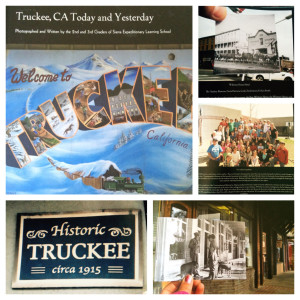
4th/5th grade combo: Red Coats and Rebels: The Pursuit of Life, Liberty, and Happiness on American Soil
Redcoats and Rebels curriculum map
Guiding Question: What are the uses and abuses of power that people demonstrate?
Experts: Local Historical Society staff; actors doing historical theater
Authentic Experiences: Revolutionary War battle simulation; Minuet Ball dancing
Product: Synthesis boxes (collection of student work chosen from a menu, all relating to the expedition Learning Targets)
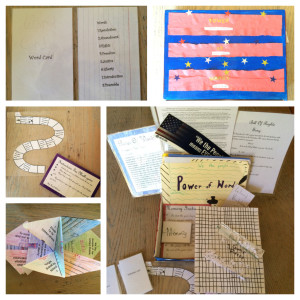
6th grade: Earth Shaking, Mountain Making
Earth Shakers curriculum map
Guiding Question: What geologic clues can we use to understand our planet’s landscape throughout time?
Authentic Experiences: 4-days of fieldwork in Lassen National Park; local hikes; expert presentations
Product: Documentary film – won 1st place in the Education category at Yosemite Film Festival.
View the Geology of California video here.
7th grade: Cartographers and Commanders
Cartographers & Commanders curriculum map fall
Guiding Question: How have historical navigation and exploration shaped the modern world?
Authentic Experiences: Wilderness navigation and San Francisco Bay sailing excursion
Product: Create board games highlighting specific explorers
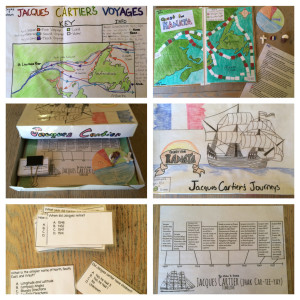
8th grade: What the Bleep Do We Know?
What the Bleep curriculum map
Guiding Question: How does perspective impact the interpretation of historical events?
Authentic Experiences: Interviewing community in San Francisco’s Chinatown; service at Glide Memorial Church (a homeless food bank)
Product: Political cartoons and descriptions, public showing at local restaurant
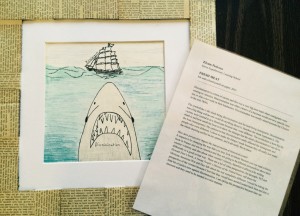
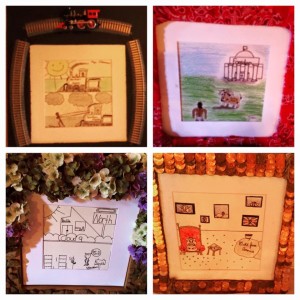
The full implementation of expeditions immerses students in the theme-based study, grounding them with fieldwork and experts, and motivating them with connections to their lives and communities. Inspired and connected students lead to higher quality work, as evidenced by the sampling above. Additonal SELS HQW can be accessed at Models of Excellence, a website dedicated to advancing HQW through exemplars, and in our Student Character section.
Craftsmanship and a Culture of Excellence
SELS character program provides foundational aspects to the development of engaged and kind individuals. Combined with the rigor and expectations around high-quality work, the school (and thus the students) have a demonstrated culture of excellence. This culture helps frame who students will be and what sort of work they will produce. For more on this, visit our Student Character page.
This culture of excellence is important in facilitating craftsmanship, for both staff and students. As part of our “not yet” philosophy, staff continue to work on all three HQW attributes. While most student work/products address complexity, craftsmanship, and authenticity, there is sometimes variability in the consistency of attribute depth within a crew and/or across grade levels. Student work is tracked by each classroom and those needing support are provided scaffolding and intervention. While we look for any sub-group patterns in this work, due to low student numbers we are unable to find any. We continue to address and work on this by evaluating, revising, and reflecting on assignments and the associated student work.
To help students with this process of improving quality, they are provided examples/exemplars, tasks and rubrics, and ample time for feedback/revision. Exemplars are littered throughout this portfolio and on Models of Excellence. For larger assignments (writing and projects), students produce several drafts that are critiqued and feedback provided by staff and/or other students. This process uses the task and the rubric and helps students learn craftsmanship by highlighting the changes from beginning to end. Below are examples of projects showing the process:
